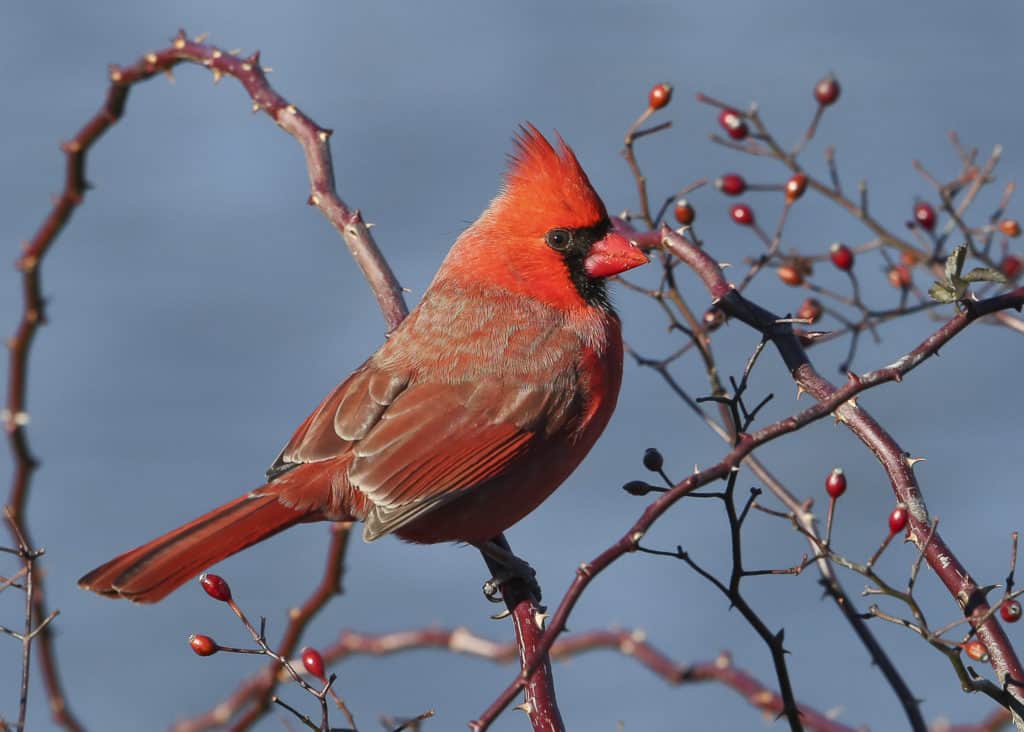Creature Feature

The Redbird of Winter
By Wayne Bierbaum
On several occasions I have been asked to make photo Christmas cards. The most requested animal photo has been for a particular bird.
The first request came from a woman who asked for cards having “the redbird” on it. I had not heard of a redbird before and since there a several birds that are red, I had to get her to identify the one she was talking about out of a book. It turned to be a Northern cardinal. I didn’t know that “redbird” is a commonly used colloquial name for a cardinal.
The early European settlers named the bright red male bird after the red robes of Catholic cardinals. The female cardinals are more light pinkish brown than red. Both sexes have red beaks that are shaped for crushing seeds. As adults, seeds and fruit make up 90% of their diet but the young are fed mostly insects. Adults will eat an occasional insect and seem to like snacking on dried meal worms.
Cardinals are very common east of the Mississippi River, from Florida to the Canadian border. They do not migrate and the same cardinal couple will spend years in the same location. Tagged birds have been noted to live over 15 years. They do usually partner for life but some studies have noted occasional cheating and “divorcing.”
Cardinals nest in dense bushes and trees, generally staying below 10 feet high. They typically have two broods of two to four chicks. The young become independent quickly but have low first year survival rates.
Cardinals live in the wild but they also have become adapted to living around humans. They are attracted to feeders and seem to prefer sunflower and safflower seeds. But they honestly are not picky and almost any seed mix will appease them.
I usually do not put out bird seed in the spring and summer. Winter is the hardest for the birds and that is when I run out of seed quickly. But winter is also the best time for photos of them. Few leaves and occasional snow helps a redbird stand out.
